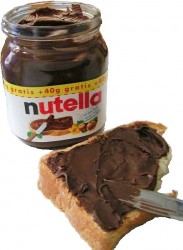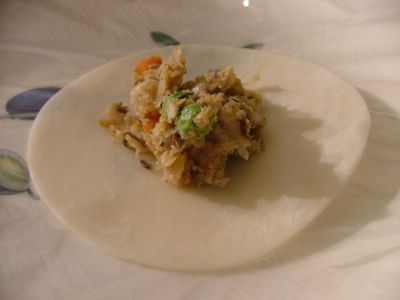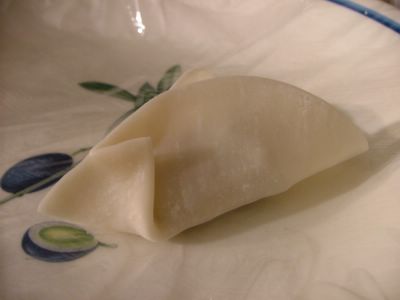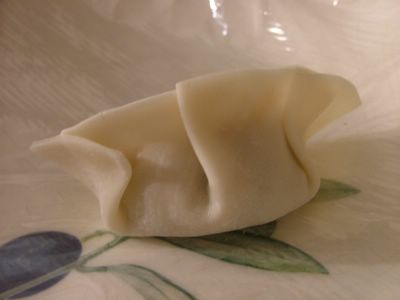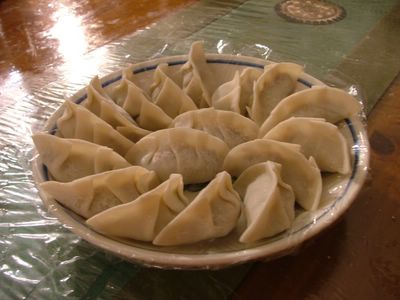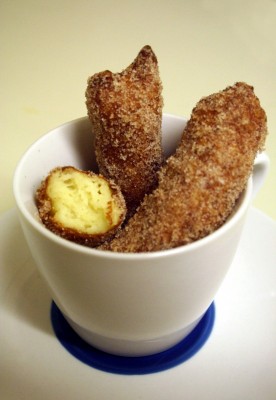
Pop quiz: what does Cinco de Mayo have to do with the French? First, it marks the Mexican victory over the French troops in the Battle of Puebla. (If you thought it was Mexican independence day, you were wrong.)
Second, and more relevant to this blog, Cinco de Mayo marks the day to eat a French-inspired dessert. Perhaps Mexico’s most famous pastry is the churro, a deep-fried, cinnamon-dusted dough. It is not a Mexican doughnut. It is an unfilled Mexican cream puff.
Doughnuts traditionally fall into two schools: yeast-raised (ie Krispy Kreme) or cake batter (ie Dunkin Donuts, which gets its leavening by baking powder or soda). Churros contain neither yeast nor baking powder/soda. Instead, they are leavened by eggs, and the dough is cooked on the stovetop before it’s shaped. Heating the liquid with the flour tricks the dough into abosorbing more moisture, and it makes it more gelatinous. This method is the same as the French dough, pate a choux. Pate a choux makes cream puffs and eclairs, but if it’s deep fried and unfilled, it makes churros.
Deep frying gets a bad rap because the food is “boiled” in fat. However, if the oil is at the correct temperature, it will not penetrate the food. Besides health reasons, frying seems dangerous, with the potential of splattered hot grease and exploding food. Just use some common sense, and it won’t be any scarier than a pot of boiling water. Don’t go “bombs away!” when dropping the food in. Plop it in gently and away from you. The oil won’t bite. I promise.
Churros
Sources: Recipe Gullet, Bon Appetit and Mexico One Plate at a Time by Rick Bayless
Dough:
1 c milk
1/4 c (1/2 stick) unsalted butter
1/2 tsp salt
1 T sugar
1 c all-purpose flour
2 eggs
Coating:
1/2 c sugar
1/2 T cinnamon
Canola oil for frying, about 3 cups
Bring first 4 ingredients to boil in heavy medium saucepan, stirring until sugar dissolves and butter melts. Reduce heat to medium-low. Add flour; stir vigorously with wooden spoon until shiny dough mass forms, about 1 minute. Transfer to large bowl; cool 5 minutes. Using electric mixer, beat in eggs, 1 at a time; continue beating until smooth, shiny, sticky paste forms. (Can be made 2 hours ahead. Cover and let stand at room temperature.)
Heat oil to a depth of at least 2 inches in a heavy large skillet over medium heat to 350°F (the oil will shimmer on the surface and give off that characteristic hot oil aroma). Working in batches, spoon batter into pastry bag fitted with large star tip. Pipe batter into hot oil in 3 1/2- to 4-inch-long ribbons (use knife if necessary to cut batter at end of star tip) and allow batter to slide into oil.
To test the oil temperature, cook one churro, turning occasionally, until it is deep golden brown, about 2 to 3 minutes. Remove it to drain on paper towels and let it cool a minute, then break it open to check for doneness-it should be just a little soft inside, but not too doughy. Too low an oil temperature, and the churros will “boil” in the oil, absorbing grease but bursting apart before they’re brown; too high a temperature, and they’ll brown quickly but not cook enough.
Fry the rest of the churros, about 3 at a time. Transfer to paper towels and cool 5 minutes, then toss in cinnamon sugar while still warm. Best when eaten quickly. Makes about 12-16 churros.
Notes/tips:
If you’re inexperienced with frying, be sure to do a test churro. Otherwise, you may find out too late that the entire batch is either raw inside or overcooked.
You can safely re-use the oil after you let it cool, strain it through a cheesecloth (to get rid of burnt food particles) and refrigerate (oil doesn’t like heat or light). Keep in mind that every time you re-use oil, the smoke point goes down as much as 10 F. For example, canola oil has a smoke point of 400 F. Heat it any more, and it breaks down and becomes hazardous to your health. Canola oil that’s used a second time can safely be heated to 390 F. If your oil turns dark or smells funny, it’s bad.
</p>
